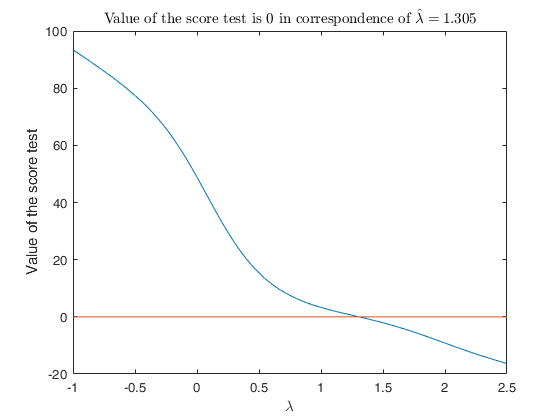A vector with n elements that
contains the response variable.
It can be either a row or a column vector.
Data Types: single| double
Data matrix of explanatory
variables (also called 'regressors')
of dimension (n x p-1). Rows of X represent observations, and
columns represent variables.
Missing values (NaN's) and infinite values (Inf's) are allowed,
since observations (rows) with missing or infinite values will
automatically be excluded from the computations.
Data Types: single| double
Specify optional comma-separated pairs of Name,Value arguments.
Name is the argument name and Value
is the corresponding value. Name must appear
inside single quotes (' ').
You can specify several name and value pair arguments in any order as
Name1,Value1,...,NameN,ValueN.
Example:
'intercept',false
, 'la',[0 0.5]
, 'Lik',false
, 'nocheck',true
, 'tukey1df',true
Indicator for the constant term (intercept) in the fit,
specified as the comma-separated pair consisting of
'Intercept' and either true to include or false to remove
the constant term from the model.
Example: 'intercept',false
Data Types: boolean
It specifies for which values of the
transformation parameter it is necessary to compute the
score test.
Default value of lambda is la=[-1 -0.5 0 0.5 1]; that
are the five most common values of lambda.
Example: 'la',[0 0.5]
Data Types: double
If true, the value of the likelihood for the augmented
model will be produced,
else (default) only the value of the score test will be
given.
Example: 'Lik',false
Data Types: logical
If nocheck is equal to true, no check is performed on
matrix y and matrix X. Notice that y and X are left
unchanged. In other words, the additional column of ones
for the intercept is not added. As default nocheck=false.
Example: 'nocheck',true
Data Types: boolean
Tukey's one degree of freedome test for non-additivity.
The constructed variable is given by
where z(\lambda) is the transformed response, and
\hat z(\lambda) are the fitted values on the
transformed response. The t test on the constructed
variable above provides a test from departures from the
assumed linear model and is known in the literature as
Tukey's one degree of freedome test for non-additivity.
If tukey1df is true the test is computed and returned
inside output structure with fieldname ScoreT else
(default) the value of the test is not computed.
Example: 'tukey1df',true
Data Types: boolean


 Score test using Darwin data given by Yeo and Johnson.
Score test using Darwin data given by Yeo and Johnson.